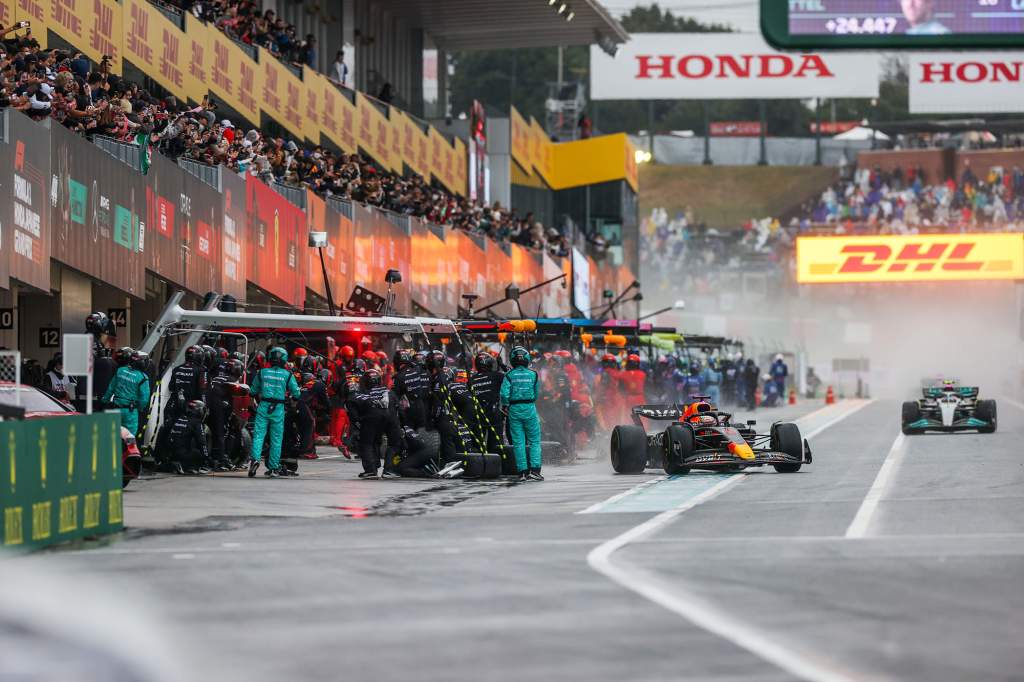Up Next

The accepted breach agreement (ABA) option exists in Formula 1’s financial regulations effectively as a plea-bargain mechanism.
An accepted breach agreement, as the FIA has now proposed to Red Bull, is available in cases of both a procedural breach or a minor overspend breach.
However, in the case of what is called a “material overspend breach”, the threshold for which is an overspend of 5% or more of the cost cap limit, an ABA is not available.
Just as with a plea-bargain in the wider world, this allows the Cost Cap Administration to agree with a team that has committed the breach what its offence is and the penalties. Williams has already entered into an ABA for its procedural breach, leading to a $25,000 fine.
Reaching an ABA also limits the potential penalties, which would likely be more extreme should a team enter into the formal cost cap adjudication process and be found guilty. Therefore, a team is incentivised to admit to having committed a breach and not contest its punishment and the equivalent of a ‘trial’ by the Cost Cap Adjudication Panel is avoided. This expedites the process and avoids a long, drawn-out dispute.
Crucially, article 6.28 of the financial regulations states that “there shall be no right of appeal in respect of any decision by the Cost Cap Administration as to whether to enter into an ABA or not”. In short, an ABA closes the case.
Article 6.29 of the financial regulations lays out the four groups of measures that may be included in an ABA deal.
The ABA can set out “obligations or conditions to be fulfilled or satisfied” by the team for whatever timescale is deemed appropriate, as well as being able to “provide for enhanced monitoring procedures to be put in place”. This means there is potential for greater scrutiny of the offending team’s spending and accounting in the future.
It also allows financial penalties to be imposed, as well as the available “minor sporting penalties” defined elsewhere in the regulations. If a financial penalty is imposed, this has no effect on its cost cap accounting as such fines are defined as excluded from the cost cap in the same way as, for example, driver costs.
However, the available minor sporting penalties are reduced in the case of an ABA, which specifically rules out points deductions or a reduction in the team’s cost cap being imposed. These are penalties that would be available if a team were to be found guilty of a minor breach at the Cost Cap Adjudication without such an agreement.
That means that the remaining available minor sporting penalties are a public reprimand, suspension from one or more stages of a competition [event] but not the race itself and limitations on aerodynamic and other forms of testing. For example, a team’s windtunnel and CFD allowance could be cut.
If an ABA is struck between Red Bull and the FIA, this would mark a decisive end to the process given it can neither be appealed nor additional penalties added.
The Cost Cap Administration “shall oversee the implementation of, and monitor compliance with, the terms of any ABA” with the team referred to the Cost Cap Adjudication Panel. The regulations state that “such non-compliance shall be treated as a procedural breach”.
As a pre-requisite of the ABA, the team must do four things under article 6.31 of the financial regulations. It must acknowledge that it has breached the financial regulations, “accept, observe and satisfy the sanction(s) and/or enhanced monitoring procedures levied”, bear the costs detailed in the ABA and waive its right to challenge the ABA.
The regulations also demand a certain level of transparency, with the regulations stating that “the Cost Cap Administration will publish a summary of the terms of the ABA, detailing the breach, any sanctions, and any enhanced monitoring procedures, omitting any confidential information”.
Inevitably, there is an element of negotiation in such a process. An ABA makes the process cleaner and more straightforward given the offending party fully accepts it has committed a breach. In doing so, it avoids the risk of more stringent penalties and can avoid entirely any risk of measures such as a points deduction for the season of the breach or a reduction in future cost-cap spending. The Cost Cap Administration, in return, gets a more straightforward ‘conviction’ and the case is closed.

The idea might seem anathema to some given it makes what is a process of sporting legality less about absolutes and more about agreement. But the mechanism exists as a recognition of the complexity of such regulations and to avoid the forensic investigation, adjudication disputes and potentially even threats of wider legal action that could drag out such a breach for a long time.
But its existence does require the agreement of both the team in question and the FIA, meaning that it can theoretically allow such offences to be dealt with in a proportionate and clean manner. Whether or not rival teams agree with any ABAs that are struck is another matter, especially given the fact that such penalties cannot be appealed.





